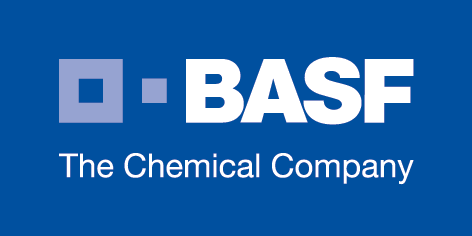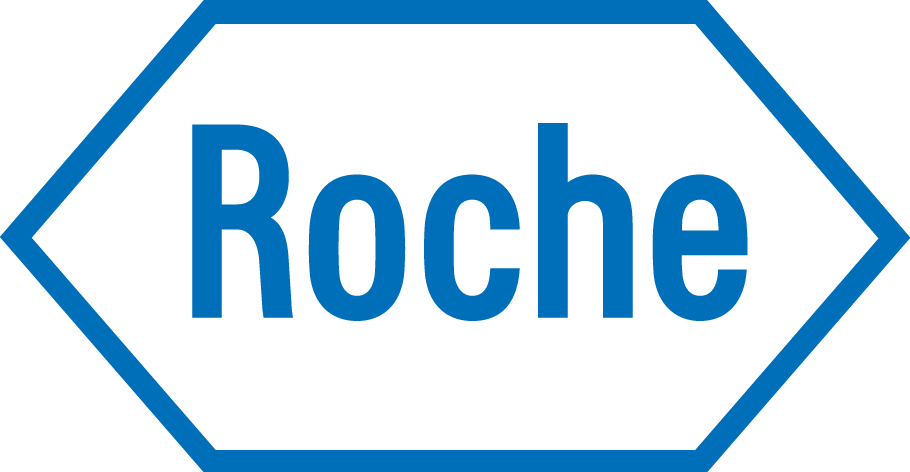Team:ETH Zurich/Interview1
From 2012.igem.org
Interview with Prof. Ingo Potrykus
This is a translation from the german original questions and answers (see below) done by a student. We try to translate as accurately as possible, but we are no ribosomes. No mistake that arises through translation mistakes is intended.
Question: Is the elongation of the Moratorium an indication for the little appreciation by society and politics of research regarding GMP in Switzerland?
Answer: The elongation is an indication for the influence of the farmers lobby that expects higher incomes with food labeled ‘not genetically modified’.
Q: How do you react on people that sabotage the research of GMP in outdoor tests?
A: I think they are misguided idealists that do not understand about GMPs. Never the less their actions are against the law and should be fined. The destruction of fields of GMPs can destroy years of work of PhD students and compromise their graduation.
Q: In other words: Does the moratorium say that gene technology is safe, but not in Switzerland where the resentments of the public are greater than the benefit of GMPs?
A: Approximately yes.
Q: Which consequences does the moratorium have for the research on GMPs?
A: The series of moratoriums decisively contributed to the fact that research with GMP makes no more sense in Switzerland, with all consequences. Switzerland bows out of the development of a technology that is regarded as ‘strategic future technology’ in many other countries. Switzerland once had a leading position on this field (see golden rice project).
Q: Should Switzerland, after the results of the NRP59, not be a pioneer in GMPs to raise the acceptance elsewhere? How could one convince the Swiss of GMPs?
A: One must let the Swiss carry the can of their decision. They will realize when it is too late, there are existing precedents.
Q: Even though the government founded research had a positive outcome towards GMPs: does nothing change from a researcher’s point of view? Are there a few that are scientifically well informed, but the majority feels ensured in their fears and prejudices because of the continued moratorium?
A: Of course, this is also the Medias fault.
Q: How do you explain the success of genetically produced medicine in industrial countries while they are sceptic against genetically altered food?
A: All people in rich countries know that they will at some point need the advance in pharmacy. Since they are not hungry and can afford the luxury of ‘bio-labeled’ food, they do have no reason to question the anti GMP propaganda of NGO activists.
Q: Can the higher acceptance of golden rice in the population of poor countries be explained by the fact that the use of GMP is better communicated? Are the people in those countries informed well enough?
A: The people that face the danger of their children becoming blind or die due to the lack of vitamin A have no problem with GMPs yet. Never the less Greenpeace etc. work intensively towards changing this fact.
Q: How did you experience the influences of different groups with different interests, e.g. industry or critics of gene technology, on the golden rice project?
A: The industry kindly supported the project with free licenses. The enemies of gene technology are one of the main reasons that golden rice was delayed for ten years and could not help those whose life and health rely on it.
German original Version
Q: Ist die Verlängerung des Moratoriums ein Indiz für die geringe politische und gesellschaftliche Wertschätzung oder die Angst vor der Forschung auf dem Gebiet der GVP in der Schweiz?
A: Sie ist ein Indiz für den Einfluss der Bauernlobby, die einen höheren wirtschaftlichen Ertrag mit dem label „Gentechnikfrei“ erwarten kann.
Q: Wie begegnen Sie Menschen, die die Forschung an GVP im Feldversuch sabotieren?
A: Ich halte sie für irregeleitete Idealisten, die nicht wirklich etwas von der Sache verstehen. Trotzdem sind ihre Aktionen ungesetzlich und sollten bestraft werden. Feldzerstörungen können die jahrelange Arbeit von Doktoranden vernichten und deren Abschluss gefährden.
Q: Sagt das Moratorium mit anderen Worten: ‚Gentechnik ist sicher aber nicht hier, weil in der Schweiz der Nutzen nicht die Ressentiments der Bevölkerung übersteigt‘?
A: So ungefähr ja.
Q: Welche Konsequenzen hat das Moratorium für die Forschung an GVP in der Schweiz?
A: Die Serie von Moratorien hat entscheidend dazu beigetragen, dass Forschung mit GVP in der Schweiz keinen Sinn mehr macht, mit allen Konsequenzen. Die Schweiz verabschiedet sich von der Entwicklung einer Technologie, die in vielen Ländern als „strategische Zukunftstechnologie“ gewertet wird. Die Schweiz hatte einmal eine Spitzenstellung (siehe Golden Rice).
Q: Sollte man nach den Ergebnissen des Moratoriums nicht als Vorreiter auftreten, um die Akzeptanz anderswo zu erhöhen? Wie könnte man die Schweizer überzeugen?
A: Man sollte die Schweizer ihren Fehler ausbaden lassen. Sie werden aufwachen, wenn es zu spät ist. Dafür gibt es Präzedenzfälle.
Q: Trotz der staatsfinanzierten Forschung mit durchaus positivem Fazit: Ändert sich letztendlich nichts aus Forschersicht? Bleiben einige wenige wissenschaftlich fundiert informiert, die Mehrheit jedoch sieht Ihre Angst oder Vorurteile gegenüber GVP durch das Moratorium bestärkt?
A: Natürlich. Das ist auch Schuld der Medien.
Q: Wie erklären Sie sich den Erfolg von gentechnisch gewonnener Medizin in Industrieländern bei gleichzeitiger Skepsis gegenüber gentechnisch veränderten Nahrungsmitteln?
A: Alle Menschen in reichen Ländern wissen, dass sie irgendwann den Fortschritt in der Pharmazie benötigen werden. Da sie satt sind und sich sogar den Luxus von „Bio“-Lebensmitteln leisten können, sehen sie keinen Grund, die Anti-GVP Propaganda von NGO Aktivisten zu hinterfragen.
Q: Ist die Akzeptanz von Golden Rice in der Bevölkerung in ärmeren Ländern höher, gegebenenfalls weil dort der Nutzen kommuniziert wird? Klärt man die Verbraucher dort genügend auf?
A: Die Bevölkerungen, die in Gefahr sind, dass ihre Kinder wegen Vitamin A-Mangel erblinden oder sterben, haben (noch) kein Problem damit, dass es sich um ein GVP handelt. Aber Greenpeace et al. Arbeiten intensiv daran, das zu ändern.
Q: Wie haben Sie die Einflussnahme von Interessensgruppen (Industrie oder Gentechnikgegner) auf das ‚Golden Rice Project‘ erlebt?
A: Die Industrie hat das Projekt mit freien Lizenzen und „in kind support“ unterstützt. Die Gentechnikgegner sind mit verantwortlich dafür, dass Golden Rice mit mehr als zehnjähriger Verspätung zu denen kommt, deren Leben und Gesundheit davon abhängt.
References
- Brown, B. a, Headland, L. R., & Jenkins, G. I. (2009). UV-B action spectrum for UVR8-mediated HY5 transcript accumulation in Arabidopsis. Photochemistry and photobiology, 85(5), 1147–55.
- Christie, J. M., Salomon, M., Nozue, K., Wada, M., & Briggs, W. R. (1999): LOV (light, oxygen, or voltage) domains of the blue-light photoreceptor phototropin (nph1): binding sites for the chromophore flavin mononucleotide. Proceedings of the National Academy of Sciences of the United States of America, 96(15), 8779–83.
- Christie, J. M., Arvai, A. S., Baxter, K. J., Heilmann, M., Pratt, A. J., O’Hara, A., Kelly, S. M., et al. (2012). Plant UVR8 photoreceptor senses UV-B by tryptophan-mediated disruption of cross-dimer salt bridges. Science (New York, N.Y.), 335(6075), 1492–6.
- Cloix, C., & Jenkins, G. I. (2008). Interaction of the Arabidopsis UV-B-specific signaling component UVR8 with chromatin. Molecular plant, 1(1), 118–28.
- Cox, R. S., Surette, M. G., & Elowitz, M. B. (2007). Programming gene expression with combinatorial promoters. Molecular systems biology, 3(145), 145. doi:10.1038/msb4100187
- Drepper, T., Eggert, T., Circolone, F., Heck, A., Krauss, U., Guterl, J.-K., Wendorff, M., et al. (2007). Reporter proteins for in vivo fluorescence without oxygen. Nature biotechnology, 25(4), 443–5
- Drepper, T., Krauss, U., & Berstenhorst, S. M. zu. (2011). Lights on and action! Controlling microbial gene expression by light. Applied microbiology, 23–40.
- EuropeanCommission (2006). SCIENTIFIC COMMITTEE ON CONSUMER PRODUCTS SCCP Opinion on Biological effects of ultraviolet radiation relevant to health with particular reference to sunbeds for cosmetic purposes.
- Elvidge, C. D., Keith, D. M., Tuttle, B. T., & Baugh, K. E. (2010). Spectral identification of lighting type and character. Sensors (Basel, Switzerland), 10(4), 3961–88.
- GarciaOjalvo, J., Elowitz, M. B., & Strogatz, S. H. (2004). Modeling a synthetic multicellular clock: repressilators coupled by quorum sensing. Proceedings of the National Academy of Sciences of the United States of America, 101(30), 10955–60.
- Gao Q, Garcia-Pichel F. (2011). Microbial ultraviolet sunscreens. Nat Rev Microbiol. 9(11):791-802.
- Goosen N, Moolenaar GF. (2008) Repair of UV damage in bacteria. DNA Repair (Amst).7(3):353-79.
- Heijde, M., & Ulm, R. (2012). UV-B photoreceptor-mediated signalling in plants. Trends in plant science, 17(4), 230–7.
- Hirose, Y., Narikawa, R., Katayama, M., & Ikeuchi, M. (2010). Cyanobacteriochrome CcaS regulates phycoerythrin accumulation in Nostoc punctiforme, a group II chromatic adapter. Proceedings of the National Academy of Sciences of the United States of America, 107(19), 8854–9.
- Hirose, Y., Shimada, T., Narikawa, R., Katayama, M., & Ikeuchi, M. (2008). Cyanobacteriochrome CcaS is the green light receptor that induces the expression of phycobilisome linker protein. Proceedings of the National Academy of Sciences of the United States of America, 105(28), 9528–33.
- Kast, Asif-Ullah & Hilvert (1996) Tetrahedron Lett. 37, 2691 - 2694., Kast, Asif-Ullah, Jiang & Hilvert (1996) Proc. Natl. Acad. Sci. USA 93, 5043 - 5048
- Kiefer, J., Ebel, N., Schlücker, E., & Leipertz, A. (2010). Characterization of Escherichia coli suspensions using UV/Vis/NIR absorption spectroscopy. Analytical Methods, 9660. doi:10.1039/b9ay00185a
- Kinkhabwala, A., & Guet, C. C. (2008). Uncovering cis regulatory codes using synthetic promoter shuffling. PloS one, 3(4), e2030.
- Krebs in Deutschland 2005/2006. Häufigkeiten und Trends. 7. Auflage, 2010, Robert Koch-Institut (Hrsg) und die Gesellschaft der epidemiologischen Krebsregister in Deutschland e. V. (Hrsg). Berlin.
- Lamparter, T., Michael, N., Mittmann, F., & Esteban, B. (2002). Phytochrome from Agrobacterium tumefaciens has unusual spectral properties and reveals an N-terminal chromophore attachment site. Proceedings of the National Academy of Sciences of the United States of America, 99(18), 11628–33.
- Levskaya, A. et al (2005). Engineering Escherichia coli to see light. Nature, 438(7067), 442.
- Mancinelli, A. (1986). Comparison of spectral properties of phytochromes from different preparations. Plant physiology, 82(4), 956–61.
- Nakasone, Y., Ono, T., Ishii, A., Masuda, S., & Terazima, M. (2007). Transient dimerization and conformational change of a BLUF protein: YcgF. Journal of the American Chemical Society, 129(22), 7028–35.
- Orth, P., & Schnappinger, D. (2000). Structural basis of gene regulation by the tetracycline inducible Tet repressor-operator system. Nature structural biology, 215–219.
- Parkin, D.M., et al., Global cancer statistics, 2002. CA: a cancer journal for clinicians, 2005. 55(2): p. 74-108.
- Rajagopal, S., Key, J. M., Purcell, E. B., Boerema, D. J., & Moffat, K. (2004). Purification and initial characterization of a putative blue light-regulated phosphodiesterase from Escherichia coli. Photochemistry and photobiology, 80(3), 542–7.
- Rizzini, L., Favory, J.-J., Cloix, C., Faggionato, D., O’Hara, A., Kaiserli, E., Baumeister, R., et al. (2011). Perception of UV-B by the Arabidopsis UVR8 protein. Science (New York, N.Y.), 332(6025), 103–6.
- Roux, B., & Walsh, C. T. (1992). p-aminobenzoate synthesis in Escherichia coli: kinetic and mechanistic characterization of the amidotransferase PabA. Biochemistry, 31(30), 6904–10.
- Strickland, D. (2008). Light-activated DNA binding in a designed allosteric protein. Proceedings of the National Academy of Sciences of the United States of America, 105(31), 10709–10714.
- Sinha RP, Häder DP. UV-induced DNA damage and repair: a review. Photochem Photobiol Sci. (2002). 1(4):225-36
- Sambandan DR, Ratner D. (2011). Sunscreens: an overview and update. J Am Acad Dermatol. 2011 Apr;64(4):748-58.
- Tabor, J. J., Levskaya, A., & Voigt, C. A. (2011). Multichromatic Control of Gene Expression in Escherichia coli. Journal of Molecular Biology, 405(2), 315–324.
- Thibodeaux, G., & Cowmeadow, R. (2009). A tetracycline repressor-based mammalian two-hybrid system to detect protein–protein interactions in vivo. Analytical biochemistry, 386(1), 129–131.
- Tschowri, N., & Busse, S. (2009). The BLUF-EAL protein YcgF acts as a direct anti-repressor in a blue-light response of Escherichia coli. Genes & development, 522–534.
- Tschowri, N., Lindenberg, S., & Hengge, R. (2012). Molecular function and potential evolution of the biofilm-modulating blue light-signalling pathway of Escherichia coli. Molecular microbiology.
- Tyagi, A. (2009). Photodynamics of a flavin based blue-light regulated phosphodiesterase protein and its photoreceptor BLUF domain.
- Vainio, H. & Bianchini, F. (2001). IARC Handbooks of Cancer Prevention: Volume 5: Sunscreens. Oxford University Press, USA
- Quinlivan, Eoin P & Roje, Sanja & Basset, Gilles & Shachar-Hill, Yair & Gregory, Jesse F & Hanson, Andrew D. (2003). The folate precursor p-aminobenzoate is reversibly converted to its glucose ester in the plant cytosol. The Journal of biological chemistry, 278.
- van Thor, J. J., Borucki, B., Crielaard, W., Otto, H., Lamparter, T., Hughes, J., Hellingwerf, K. J., et al. (2001). Light-induced proton release and proton uptake reactions in the cyanobacterial phytochrome Cph1. Biochemistry, 40(38), 11460–71.
- Wegkamp A, van Oorschot W, de Vos WM, Smid EJ. (2007 )Characterization of the role of para-aminobenzoic acid biosynthesis in folate production by Lactococcus lactis. Appl Environ Microbiol. Apr;73(8):2673-81.
 "
"






